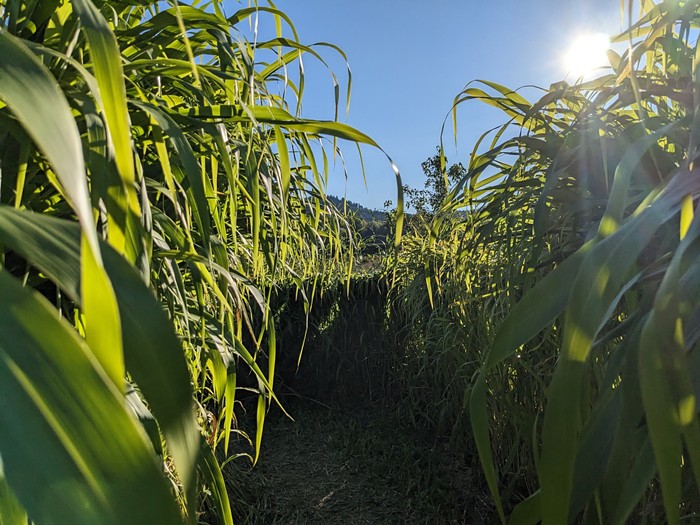Every self-respecting Oregonian is going to want to take a look at Wild Wild Country. The six-part Netflix documentary series, which premieres Fri March 16, examines one of the weirdest episodes in the state's history, when Indian religious leader Bhagwan Shree Rajneesh opened a commune in central Oregon in the early 1980s. It did not end well.
For longtime residents, it's a familiar and painful story, one in which the Rajneeshees took over the government of the nearby town of Antelope and attempted to gain control of Wasco County. In 2012, OPB's Oregon Experience made a masterful documentary, Rajneeshpuram, which expertly and concisely tells the entire hair-raising tale–which includes voter fraud, a hotel bombing, illegal immigration, an enormous cache of automatic weapons, and a bioterrorist attack of salmonella poisoning in the Dalles. The OPB film is mandatory viewing for anyone living in Oregon or with an interest in fringe religious movements.
What Wild Wild Country brings to the table are the lengthy first-hand accounts of several of Rajneesh's followers, particularly Swami Prem Niren, Rajneesh's lawyer; Jane Stork, AKA Ma Shanti Bhadra, who was involved in an attempt to assassinate a US attorney; and, most notably, Ma Anand Sheela, Rajneesh's secretary and de facto leader of the commune. Sheela was behind some truly outrageous and terrifying behavior, and she's a fascinating, untrustworthy, and ultimately exhausting character, as the long hours of interview footage prove. The filmmakers likely realized they'd landed a coup by getting her to participate, but it does seem like Sheela's being handled with kid gloves. Even though she hangs herself with her own words on more than one occasion, Wild Wild Country should have provided more accountability and outside perspective.
We watch eerie archival footage of Rajneesh's pink- and maroon-bedecked followers, many of whom wear haunted, vacant expressions even as they chant and dance—but the filmmakers don't push beyond that, so we're meant to reach our own conclusions.
Indeed, in spite of its length, Wild Wild Country confines itself to only a few viewpoints, and elides many crucial details of a truly unbelievable story. It does provide a valuable and timely consideration of the at-times-justifiable xenophobia and intolerance that Oregon's conservative residents felt toward the Rajneeshees (most of whom, it should be noted, were white). But in the end, it goes too easy on an organization that many would characterize as a cult. Rajneesh himself–while a provocative thinker about ideas of spiritualism and sexuality, and a deliberately hypnotic speaker who chews on the consonant of each word like it's an incantatory spell–was also a charlatan and exploiter of the easily influenced. He wore a one-million-dollar diamond watch, lounged on a white wingback throne, and owned 93 Rolls-Royces, from which he'd wave to his devotees as he slowly drove by. Rajneesh later changed his name to Osho–likely to avoid a connection with the crimes associated with him and his followers–and after his death, his name still commands a lucrative industry of books, stress management seminars, and a tourist-friendly meditation retreat in India.
Indeed, Wild Wild Country's greatest failing is that it doesn't effectively interrogate the corruption and hypocrisy of the Rajneeshee organization. Apart from Stork, we never hear from any followers who disavowed Rajneesh later in life; we don't hear the heartbreaking stories of those who lost family members to the commune; the movie spends no time examining the nature of religious cults and their methods of indoctrination. Instead, we watch eerie archival footage of Rajneesh's pink- and maroon-bedecked followers, many of whom wear haunted, vacant expressions even as they chant and dance—but the filmmakers don't push beyond that, so we're meant to reach our own conclusions.
That said, you still gotta see Wild Wild Country. It's a crazy story. The Oregon commune is now the site of a Young Life youth camp. "It's kind of like a cult, too," one of the residents of Antelope observes. "But they're much better neighbors than the Rajneeshees.... At least they're not waving AK-47s in your face."


















